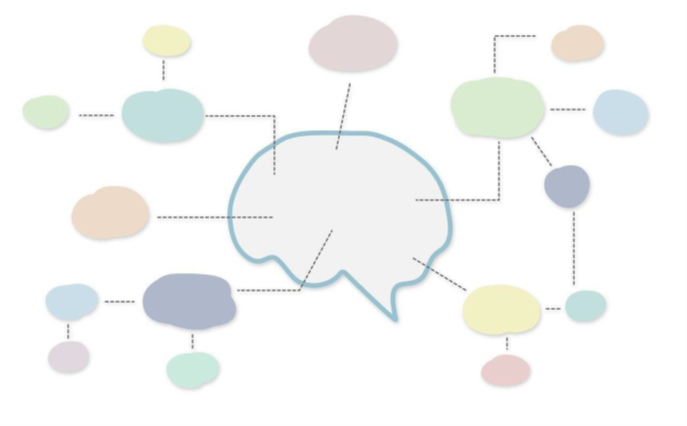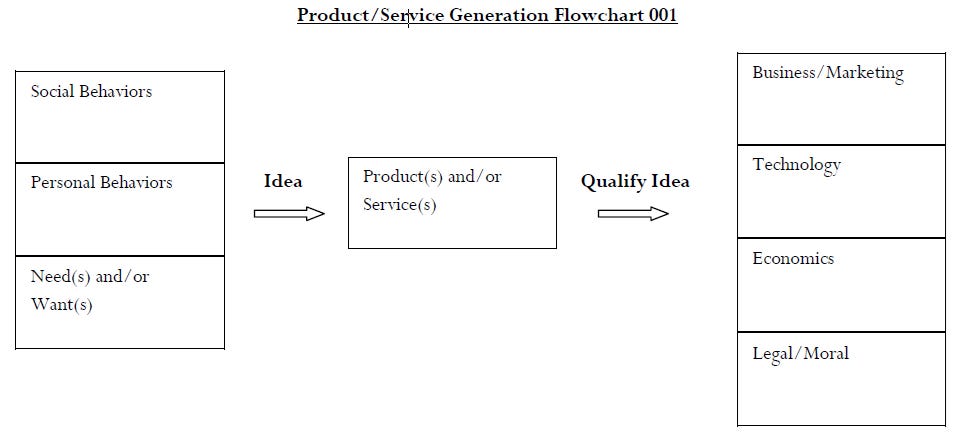Innovation and invention occurs all over the world, pursued formally in organizations and informally by individuals.
Governments and large sophisticated organizations exploit advanced innovation and invention methods, logic, and tools to solve complex and technical needs. Examples include the modern version of the theory of inventive problem solving (TOP-TRIZ), the five-step process transformation of ideal solution elements with a common associations matrix (TILMAG), advanced innovation brainstorming (ABrSt), the five-step innovation heuristic redefinition process (HRP), etc.
Highly intellectual individual innovators and inventors are known to apply such methodologies. In this category exist those who leverage eclectic methodologies in unique ways. The eccentric genius may also be found here. How can one forget cases such as the legendary mathematician Grigory Perelman who withdrew into his mother’s rundown apartment for several years to use his mastery of topology and solve the Poincaré conjecture. Afterwards, he declined the European Mathematical Society's prestigious prize, the Fields Medal, the Clay Millennium Prize of one million dollars, and asserted in a rare interview with Komsomolskaya Pravda that he was branching into nanotechnology as he had figured out how to manipulate the universe by computing hollowness.
Such genius is beyond us mere mortals. Ergo, this simple primer.
Innovation improves something so that it is better and/or more profitable than it was before. Innovation often begins with a change in thinking that results in something which is different, or a different use for something.
Invention is a creative process in which a person sees beyond what is currently known. Both innovation and invention involve exploration. There are failures and successes; however, a person can learn much from both.
Western Civilization has benefited greatly from innovation and invention as it possessed ideology that asserted innovation and invention were both possible and desirable. For example, the intellectual climate that gave rise to modern science, the principles underlying the scientific method (e.g. testability, verification/falsification), etc. were decisively shaped by Christians operating within the Christian worldview which encouraged the pursuit of knowledge based in a commitment to Christian theology. Competing non-Christian civilizations often suffered material stagnation, in comparison, due to impediments associated with their worldviews.
More recently, throughout the 1950s, 1960s, 1970, 1980s, and 1990s, innovation and invention were integral to American culture and national success. This era brought many new advances and laid a foundation for the entire world which continues today. Across the globe are innovators and inventors busy affecting society. New ideas, new services, and new products are consistently produced while new uses and improvements for existing ideas, services, and products are consistently found. So how might someone new to this topic begin to unlock their creative potential?
First, accept that one’s life is not to be spent in entertainment escapism; but rather to be spent discovering, unlocking, and using the talents God gives us to make our lives and the lives of others better. The anvil of daily activity is for profitability and the betterment of our lives, families, society, and the world.
Secondly, view the creation of new ideas to consider an enjoyable extension of normal daily life. Generating new ideas can be a purely individual activity or a shared experience people do together as a group. The process can be as simple as improving the things that you work with and use so they have more utility for you or as complicated as formally pursuing research and development as part of an organizational effort.
And having a creative mindset as one lives their life need not interfere with family, work, church, or one's personal responsibilities though it is desirable to set aside time for qualifying and developing one’s best ideas. Time management and consistency are important if an idea has been selected for pursuit.
The process of generating new ideas varies and individuals typically do what works best for them. Some are visual thinkers that carry a notepad while others are audio learners that prefer to carry a small hand-held recorder. Some are very methodological and some not so much.
If someone is getting good results and enjoying the process of generating new ideas to make things better, great. However, there are principles and existing approaches that can help a person or group with idea creation and once a new idea, new use, or better way is generated assist in qualifying it to see if it is worth pursuing and developing further.
The most common way that people innovate is when they discover ways to improve what they are doing. Our familiarity with what we know and understand can lead to better ways of doing things. In the following practice activity, see if you can think of an idea for improving something or the way that something is done.
Practice Activity: consider an idea for improving something or the way something is done.
Another common way that people innovate is by applying their abilities or the way something is done in new ways. For example, an artist might find their original work has crossover appeal and utility in fashion, fine dining, marketing, and presentations. An engineer may discover that a design they have worked with in one industry has important ramifications in a completely different industry. The examples are many. In the following activity, try to think of an instance where something you are familiar with might be used in a different way.
Practice Activity: consider a way that something you are familiar with can be used in a new way.
Another common way that people innovate is by bringing together different materials or ideas and making something new out of them. Many engineering and science-based innovations and inventions have been derived in this manner but also such popular consumer items as different flavors of ice cream. In the following activity, try to think of two different materials or ideas that could work together in a way that is not currently being done as far as you aware.
Practice Activity: consider how two different materials or ideas might come together to produce something new.
Another way product and service innovations are accomplished is through disassembly, examination, and assembly into a better product or service. Just for fun, consider the steps you take when assembling a jigsaw puzzle and ask how you might improve those steps to finish the jigsaw puzzle more efficiently.
Still another common way that people innovate is by mapping which involves taking a concept and developing a diagram of related ideas and information.
The way you create an innovation map is to write or draw the subject you intend to innovate in the middle of a blank page and then begin writing ways that you can change or improve the subject, connecting them together as desirable. You create more subtopics from these existing topics generating ever more related layers of innovation ideas. When you are finished, you will have an innovation map around something that you want to change or improve upon.
Practice Activity: consider how the “mind map” below can be used to improve something.
Be thoughtful and observant. Pay attention to how things work. Look for new or better ways of doing things. Look for opportunities and ways to gain a competitive advantage.
Consider the practicality of new ideas. Ideas which are good but impractical for someone to pursue are likely best recorded in a journal and left there. Typically, individuals pursue their best idea which has the most promise and is practical for them to pursue.
With respect to organizations, people work within an organization’s policies and structure. For example, if you have an idea to improve something for an organization then you will need to bring it to their attention properly so they may consider it. But understand that organizations make their own decisions and usually reject new ideas for good reasons that you may not be aware of.
For the entrepreneurially minded, they may begin to qualify their best idea and see if it has marketplace potential. Of course, there are a host of legalities that must be considered.
But as we are just practicing, let us examine a simple methodology designed to help visualize innovating products and services in subject areas the reader may be accustomed with. Take a minute to familiarize yourself with the following ‘Product/Service Generation Flowchart 001’ the author designed.
Typically, successful marketplace ideas for products and services correspond with what people need and want. Suggestions can be derived from human behavior. What people do, why they do them, and how people do things is important to understand. And great ideas are compelling and well-branded, whether the product or service is viable for the long-term or only for the duration of a fad. Learning how to do market research will assist in this.
Product and service ideas may be simple or complex, providing they meet the needs and wants of people in a manner that is desirable, profitable, and legal.
Once a product or service idea is conceived, it must be properly qualified. The idea must be legal, moral, and not violate existing intellectual property law. It must be economically viable and be technologically feasible. It must be marketable and make sound business sense.
Finally, it is suggested that those interested in taking a product or service to market learn how to correctly construct a viable business plan. Such; however, is beyond the scope of this simple primer on innovation and invention.
-Paul L. Pothier, M.Div., MBA, B.B.I.S., etc.
Limit of Liability/Disclaimer of Warranty: While the author and publisher has used their best efforts in preparing this article, they make no representations or warranties with respect to the accuracy or completeness of the contents of this article and specifically disclaim any implied warranties of merchantability or fitness for a particular purpose. No warranty may be created or extended by sales representatives or written sales materials. The advice and strategies contained herein may not be suitable for your situation. You should consult with a professional where appropriate. Neither the author nor the publisher shall be liable for any loss of profit or any other commercial damages, including but not limited to special, incidental, consequential, or other damages.
Fair Use: Copyright Disclaimer Under Section 107 of the Copyright Act in 1976; Allowance is made for "Fair Use" for purposes such as criticism, comment, news reporting, teaching, scholarship, and research. Fair use is a use permitted by copyright statue that might otherwise be infringing. All rights and credit go directly to its rightful owners. No copyright infringement intended.
Copyright © 2025 Paul L. Pothier. All rights reserved.



